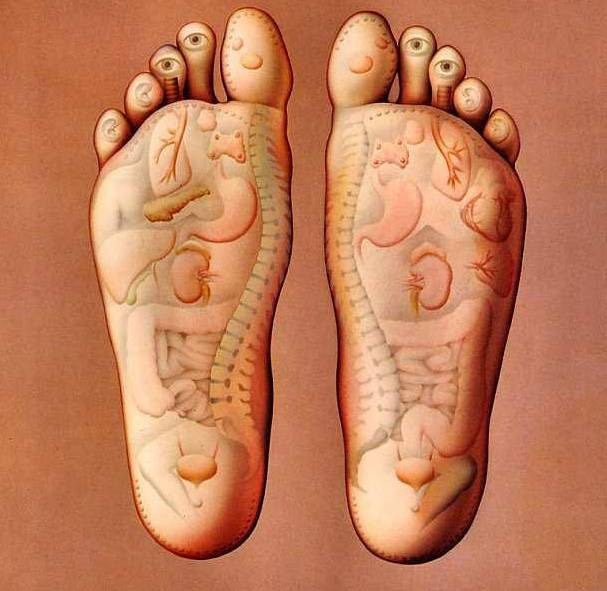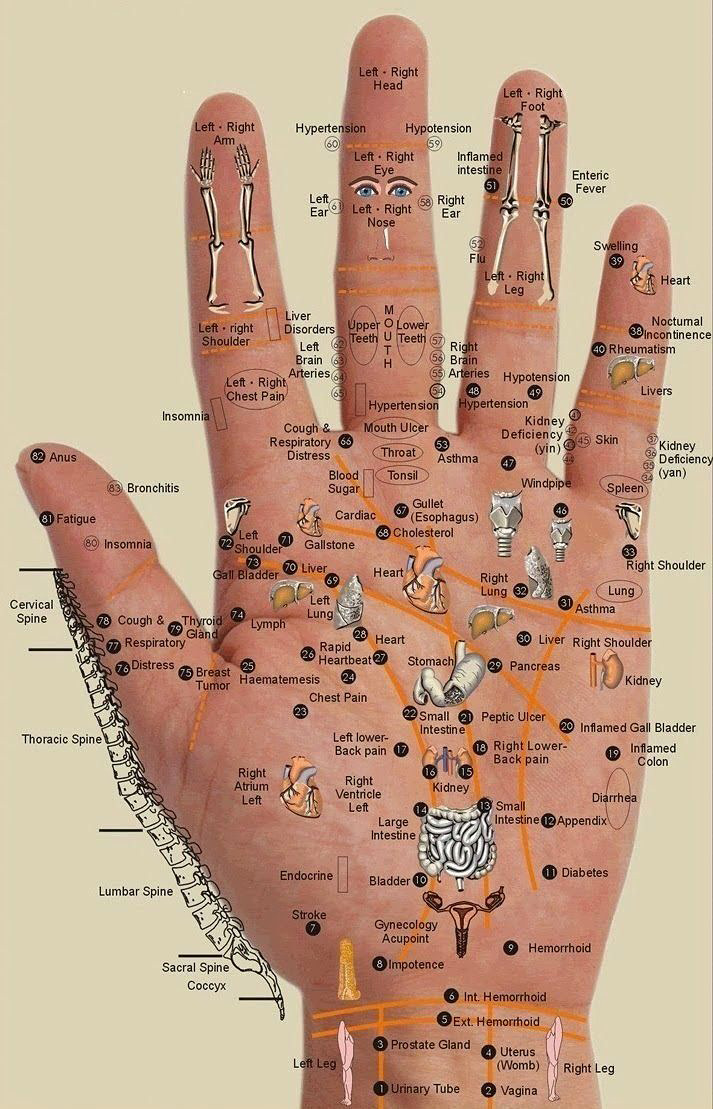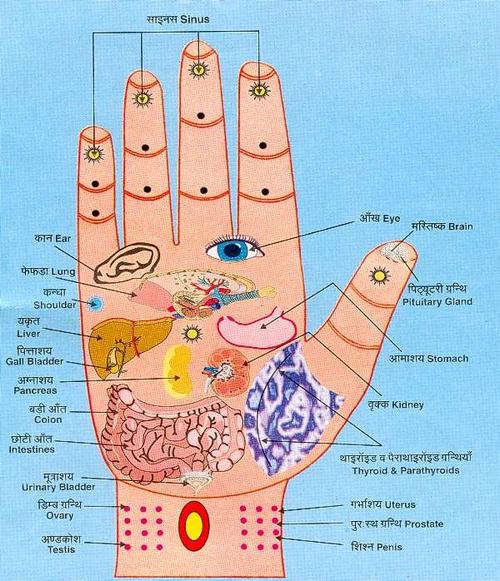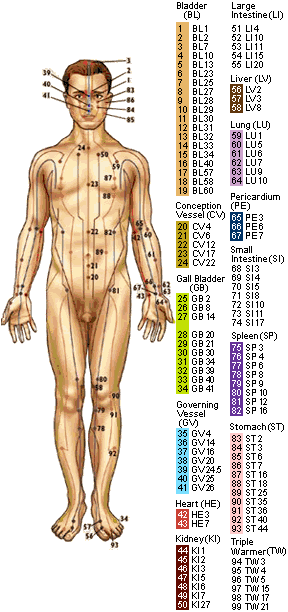Acupressure
See also :
Acupressure Points and Massage Treatment Used for thousands of years in China, acupressure applies the same principles as acupuncture to aid relaxation and wellness and to treat disease. Sometimes called pressure acupuncture, acupressure is often thought of as simply acupuncture without the needles. Whilst acupuncture uses needles to stimulate the points and is generally more powerful than acupressure, acupressure is more gentle involving applying pressure to the points. Never-the-less, for children and people who are nervous of needles, acupressure can provide an effective alternative. Both therapies are considered relatively safe as long as the practitioner is appropriately trained and licensed.
Acupressure is just one of a number of Asian bodywork therapies (ABT) with roots in traditional Chinese medicine (TCM). Examples of other Asian bodywork therapies are medical qigong and Tuina. Shiatsu is a Japanese form of acupressure.
Traditional Chinese medical theory describes special acupoints, or acupressure points, that lie along meridians, or channels, in your body. These are the same energy meridians and acupoints as those targeted with acupuncture. Through these invisible channels flows vital energy or a life force called qi (ch'i). It is also believed that these 12 major meridians connect specific organs or networks of organs, organizing a system of communication throughout your body. The meridians begin at your fingertips, connect to your brain, and then connect to an organ associated with a certain meridian.
Special Precautions of Acupressure
Certain pressure points should be avoided during pregnancy to reduce the risk of harm to the unborn baby or provoke contractions before an expectant mom's due date.
The benefits of Acupressure are
According to theory, when one of these meridians is blocked or out of balance, illness can occur. Acupressure and acupuncture are among the types of TCM that are used to help restore balance. Herbal and nutritional therapy, meditation, and therapeutic massage may also help.
Acupressure practitioners use their fingers, palms, elbows or feet, or special devices to apply pressure to acupoints on the body's meridians. Sometimes, acupressure also involves stretching or acupressure massage as well as other methods.
During an acupressure session, you lie fully clothed on a soft massage table. The practitioner gently presses on acupressure points on your body. A session typically lasts about one hour. You may need several sessions for the best results.
The goal of acupressure or other types of Asian bodywork is to restore health and balance to the body's channels of energy and to regulate opposing forces of yin (negative energy) and yang (positive energy). Some proponents claim acupressure not only treats the energy fields and body but also the mind, emotions, and spirit. Some even believe that therapists can transmit the vital energy (external qi) to another person.
Not all Western practitioners believe that this is possible or even that these meridians exist. Instead, they attribute any results to other factors, such as reduced muscle tension, improved circulation, or stimulation of endorphins, which are natural pain relievers.



